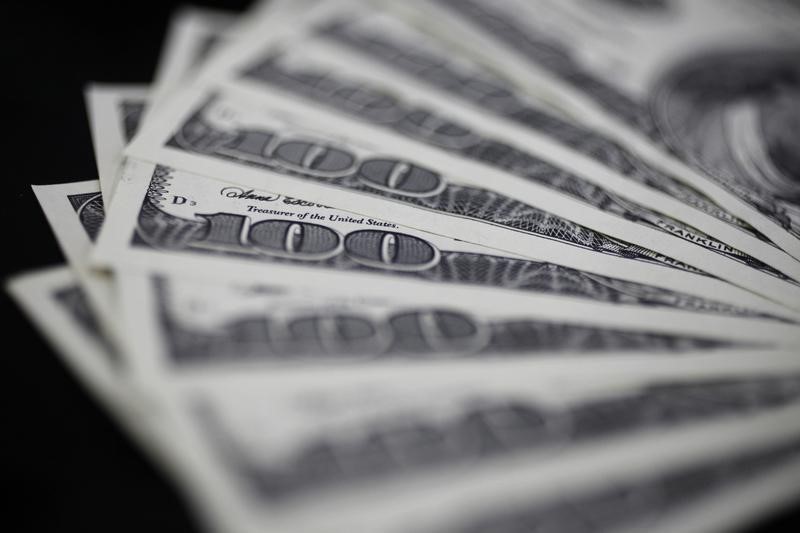Forex
Dollar retreats from two-week high ahead of Fed decision


© Reuters.
Investing.com – The U.S. dollar edged lower Tuesday, but remained near a two-week high as traders awaited a widely expected interest rate hike from the Federal Reserve later in the session.
At 02:55 ET (06:55 GMT), the , which tracks the greenback against a basket of six other currencies, traded 0.1% lower at 100.960, after pushing as high as 101.65 overnight for the first time since July 11.
Fed to hike again
The dollar received a boost Tuesday when data showed rose to a two-year high in July as inflation retreated while the economy showed resilience despite the higher interest rates.
The U.S. completes its two-day policy-setting meeting later this session and is widely expected to authorize a quarter-point hike, in what would be the 11th hike in its past 12 policy meetings.
However, uncertainty exists over whether the central bank will seek to increase rates again later in the year or whether this hike marks the end of its aggressive tightening cycle.
Thus, comments from Chair following the decision will be studied carefully for clues of the thinking of the policymakers.
Analysts at Goldman Sachs expect a hike later Wednesday to be “the last” of its tightening cycle, but the Fed will ultimately choose to “remain more hawkish than market pricing.”
“The key question is how strongly [Fed] Chair [Jerome] Powell will nod toward the ‘careful pace’ of tightening he advocated in June, which we and others have taken to imply an every-other-meeting approach,” Goldman added, in a note published late last week.
Euro edges up from two-week low
rose 0.1% to 1.1067, just above the previous session’s low of 1.1036, a level last seen on July 12.
The is also widely expected to increase interest rates by a further 25 basis points when it meets on Thursday, but traders are beginning to question whether this central bank can afford another hike this year given the building evidence of an economic slowdown.
Monday’s Purchasing Managers surveys pointed to deteriorating manufacturing activity in the eurozone, while Tuesday’s suggested business morale in the region’s most important economy deteriorated in July for the third month in a row.
Goldman Sachs on Tuesday cut its 2023 growth forecast for the eurozone, following the weaker economic activity data.
Aussie falls on soft inflation data
fell 0.2% to 0.6776, falling after softer-than-expected data ramped up bets that the was unlikely to further increase interest rates.
traded largely unchanged at 1.2898, fell 0.2% to 140.68, ahead of Friday’s meeting, while rose 0.2% to 7.1513 as optimism over more stimulus measures in China cooled ahead of the Fed decision.

 Forex3 years ago
Forex3 years agoForex Today: the dollar is gaining strength amid gloomy sentiment at the start of the Fed’s week

 Forex3 years ago
Forex3 years agoUnbiased review of Pocket Option broker

 Forex3 years ago
Forex3 years agoDollar to pound sterling exchange rate today: Pound plummeted to its lowest since 1985

 Forex3 years ago
Forex3 years agoHow is the Australian dollar doing today?

 Cryptocurrency3 years ago
Cryptocurrency3 years agoWhat happened in the crypto market – current events today

 World3 years ago
World3 years agoWhy are modern video games an art form?

 Commodities3 years ago
Commodities3 years agoCopper continues to fall in price on expectations of lower demand in China

 Economy3 years ago
Economy3 years agoCrude oil tankers double in price due to EU anti-Russian sanctions


























